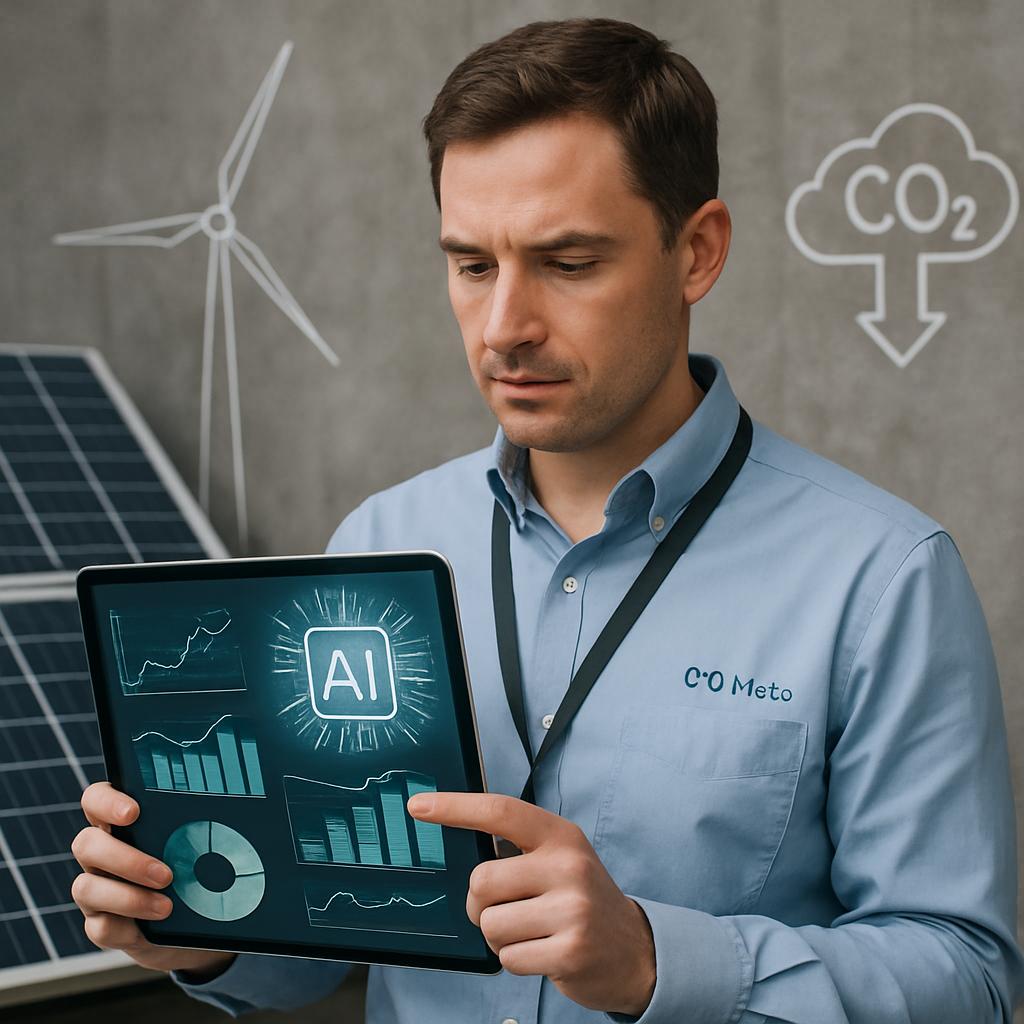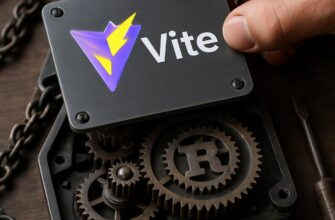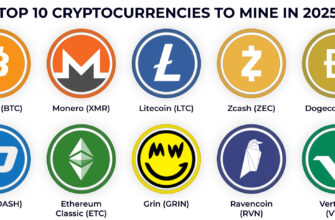Meta has quietly woven artificial intelligence into the nuts and bolts of its sustainability work, using models and automation to measure, standardize, and reduce greenhouse gas emissions across its sprawling operations.
- Why standardization matters for corporate emissions
- Where Meta is applying AI: data, forecasting, and operations
- Data centers: real-time optimization
- Supply chain and logistics: harmonizing metrics
- Energy procurement and renewable integration
- AI tools and techniques Meta uses
- How AI supports standardization
- Interfacing with established frameworks
- Challenges and trade-offs
- Criticisms and ethical considerations
- What Meta’s approach means for other companies
- Policy implications
- Practical steps for organizations that want to follow suit
- Real-world examples and lessons learned
- Where this effort can go next
Why standardization matters for corporate emissions
Metrics without consistency are like using different rulers for the same distance: comparisons collapse and good decisions become guesses. Standardized measurement makes emissions transparent and actionable.
When companies adopt shared methods, they can compare performance, spot outliers, and scale solutions that actually work. That’s especially important for large, distributed operations where small inefficiencies multiply into huge carbon footprints.
Meta’s interest in standardization reflects a simple truth: you can’t cut what you can’t reliably measure. AI helps turn messy, heterogeneous data into a consistent language for emissions across regions, vendors, and technologies.
Where Meta is applying AI: data, forecasting, and operations
Meta’s deployments of machine learning and predictive models fall into three broad buckets: harmonizing measurement, forecasting demand and carbon intensity, and automating operational controls to reduce energy use.
These buckets are not separate projects but a layered approach where better measurement improves forecasts, and smarter forecasts enable automation that trims emissions in real time.
Below I break down how those layers show up in real infrastructure: from hyperscale data centers to supply chains and product design.
Data centers: real-time optimization
Data centers are the most visible target because they consume vast amounts of power and offer immediate opportunities for savings. Meta uses models to predict load, optimize cooling systems, and reduce waste heat.
Machine learning models ingest telemetry from thousands of sensors and learn patterns that human operators would miss. These models can adjust chillers, airflow, and server loads to shave energy use while preserving performance.
In practice, that means fewer manual tuning cycles and more continuous adaptation. The result is measurable reductions in power usage effectiveness (PUE) and associated carbon emissions.
Supply chain and logistics: harmonizing metrics
Emissions from Scope 3 activities—those arising from suppliers and logistics—are notoriously hard to pin down. Meta leverages AI to normalize supplier-reported data and to infer emissions where direct reporting is absent.
Natural language processing helps extract relevant details from invoices, shipping records, and vendor disclosures, turning disparate formats into comparable entries. This creates a clearer view of where reductions matter most.
Once suppliers’ data are comparable, Meta can prioritize interventions, such as encouraging low-carbon transport modes or partnering with vendors to shift to renewable energy.
Energy procurement and renewable integration
Renewable power markets are complex. AI helps Meta forecast grid carbon intensity hour by hour and time operations to align with cleaner periods. This improves the effective carbon profile of electricity consumption.
Algorithms also aid in structuring power purchase agreements (PPAs) by modeling expected generation profiles and pricing risk. Better forecasts make renewable procurement more strategic and cost-effective.
When a large company times workloads to cleaner grid periods or signs smarter PPAs, the cumulative effect on emissions can be substantial.
AI tools and techniques Meta uses
Rather than a single magical model, Meta employs a toolbox of techniques: time-series forecasting, anomaly detection, reinforcement learning for control, and natural language processing to standardize text-based supplier data.
These tools are stitched together into platforms that provide a single pane of glass for sustainability teams, allowing them to monitor emissions, run simulations, and trigger automated responses.
| Area | AI technique | Key benefit |
|---|---|---|
| Data center operations | Reinforcement learning, predictive maintenance | Lower PUE, fewer outages |
| Supplier emissions | Natural language processing, imputational models | Comparable Scope 3 estimates |
| Energy procurement | Time-series forecasting | Optimized renewable sourcing and scheduling |
This table simplifies a complex landscape, but it highlights how different methods map to specific sustainability goals.
How AI supports standardization
Standardization thrives on repeatable rules and shared definitions; AI enforces both by transforming messy inputs into consistent outputs. Models can map diverse reporting formats into a unified schema automatically.
Beyond mapping, ML-driven validation flags anomalies and probable errors, prompting human review before flawed data moves downstream. That raises confidence in corporate disclosures and internal dashboards.
When everyone uses the same derived metrics, benchmarking becomes meaningful and the next step—decision automation—becomes safer to implement.
Interfacing with established frameworks
AI systems at Meta are designed to interoperate with international standards like the GHG Protocol and reporting platforms such as CDP. This minimizes friction for external reporting while preserving internal analytical depth.
By translating raw operations data into standardized emissions inventories, AI helps bridge the gap between engineering telemetry and corporate sustainability statements that investors and regulators expect.
That linkage is crucial: regulators increasingly demand transparent, auditable methods, and AI can produce both the numbers and the lineage that backs them up.
Challenges and trade-offs
No technology is an instant fix. AI models require high-quality labeled data, and when those labels are missing or inconsistent, predictions wobble. Meta must balance automation with human oversight.
Another concern is the energy footprint of AI itself. Training large models consumes power, and sustainability teams must weigh gains from deployed models against their training and inference costs.
Finally, standardizing measurements across suppliers and jurisdictions raises questions about fairness and local context. A one-size-fits-all metric can hide nuance if not designed carefully.
Criticisms and ethical considerations
Some critics argue that tech giants can use sustainability programs as PR cover while continuing to grow energy-intensive services. Scrutiny helps keep initiatives honest and results verifiable.
Ethical deployment of AI requires transparency about models, assumptions, and uncertainty. Meta and peers can improve trust by publishing methodologies and third-party validations.
Open dialogue with stakeholders—communities, regulators, and suppliers—keeps the focus on genuine emissions reductions rather than clever accounting.
What Meta’s approach means for other companies
Large organizations can learn from Meta’s layered approach: standardize data first, then build forecasting and operational automation on top. Smaller firms can adopt modular tools without rebuilding everything.
Cloud-based sustainability platforms let mid-size companies tap into sophisticated models without the custom engineering overhead that Meta invests in. Standard APIs and shared schemas accelerate adoption.
Public-private collaboration matters too: when major players align on definitions and interfaces, the ecosystem evolves faster and smaller companies face lower barriers to entry.
Policy implications
AI-driven standardization can inform smarter policy. Regulators gain usable, machine-readable data streams when companies adopt consistent reporting schemas, making compliance checks less manual and more objective.
However, policymakers must set guardrails to ensure standard sets are robust, protect privacy, and don’t entrench a single vendor’s approach as the default. Open standards and independent audits are essential.
When regulators, industry, and technologists collaborate, AI becomes a force multiplier for credible climate policy rather than an opaque black box.
Practical steps for organizations that want to follow suit
- Start by inventorying data sources: know what telemetry, invoices, and supplier reports exist and where gaps appear.
- Adopt a shared schema early, even if it’s lightweight. Converting to a common format is easier incrementally than later at scale.
- Use ML to standardize and validate, not as a silver bullet. Human review loops are necessary to catch edge cases.
- Prioritize high-impact areas like data centers, major suppliers, and procurement, where small percentage gains yield large absolute reductions.
- Track the energy cost of AI itself and optimize models for efficient inference when real-time control is needed.
These steps help organizations build sustainable practices that scale without requiring deep AI expertise from day one.
Real-world examples and lessons learned
From conversations with sustainability teams across the industry, a few recurring lessons stand out. First, cross-functional collaboration beats siloed pilots: engineers, procurement, and sustainability staff must co-own metrics.
Second, pilot projects that produce transparent, verifiable savings gain quick buy-in and funding to expand. Small wins create momentum for broader standardization efforts.
Finally, openness matters. Teams that share tools, schemas, and lessons learned inside and outside their organizations accelerate collective progress on emissions reduction.
Where this effort can go next

The next frontier is tighter integration between product design and operational emissions. AI can help model the lifecycle impact of features and suggest low-carbon alternatives during development.
Distributed sensing and digital twins will give even richer inputs for AI models, enabling anticipatory control that nudges operations toward lower-carbon states before inefficiencies occur.
As the tooling matures, we can expect broader industry consortia to adopt shared protocols, reducing duplication and making meaningful comparisons across companies feasible.
Meta’s blend of standardization and AI-driven optimization offers a practical template for reducing emissions at scale, while reminding us that technology must be paired with clear metrics, governance, and public scrutiny to deliver real climate benefits.
To read more on sustainability, technology, and practical strategies for emissions reduction, visit https://news-ads.com/ and explore other materials on our site.







